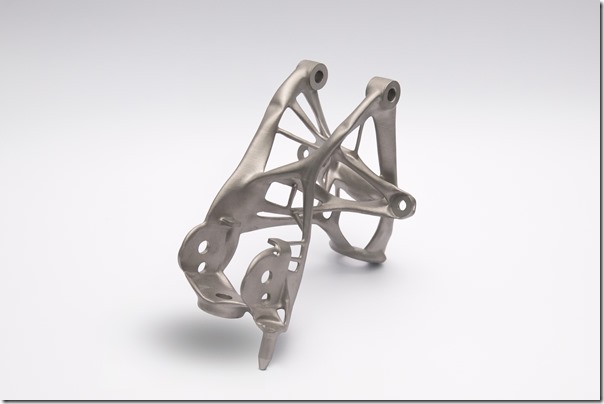GM and Autodesk Advancing Design and Manufacturing
General Motors is working with Autodesk on utilizing advanced design software and 3D printing capabilities to develop parts that are not only lighter than those otherwise developed, but which combine what would otherwise be separate parts, thereby reducing manufacturing complexity.
General Motors is working with Autodesk on utilizing advanced design software and 3D printing capabilities to develop parts that are not only lighter than those otherwise developed, but which combine what would otherwise be separate parts, thereby reducing manufacturing complexity.
It’s called “generative design.” Essentially, through the use of advanced AI-based algorithms and cloud computing horsepower they are able to run through hundreds of configurations on the way to finding the best design.
According to Ken Kelzer, GM vice president, Global Vehicle Components and Subsystems, “When we pair the design technology with manufacturing advancements such as 3D printing, our approach to vehicle development is completely transformed and is fundamentally different to co-crate with the computer in ways we simply couldn’t have managed before.”

To get to this proof-of-concept 3D-printed seat bracket, GM engineers, working with Autodesk generative design software, quickly assessed more than 150 different approaches to the design before coming up with this.
As an example, they developed a 3D printed seat bracket that combines what would otherwise be eight different components into a single structure, a structure that is 40 percent lighter and 20 percent stronger than one made with conventional processes.
Explains Scott Reese, Autodesk senior vice president for Manufacturing and Construction Products, “Generative technologies fundamentally change how engineering work is done because the manufacturing process is built into design options from the start. GM engineers will be able to explore hundreds of ready-to-be-manufactured, high-performance design options faster than they were able to validate a single design the old way.”
RELATED CONTENT
-
On Audi's Paint Colors, the Lexus ES 250, and a Lambo Tractor
From pitching a startup idea to BMW to how ZF is developing and using ADAS tech to a review of the Lexus ES 250 AWD to special info about additive at Toyota R&D. And lots in between.
-
Solid Edge Brings Divergent Modeling Worlds Together
This new software suite allows the development of “beautiful models ready for production.” What more can you ask for?
-
On the Genesis GV80, Acura MDX, BMW iDrive and more
From Genesis to Lamborghini, from Bosch to Acura: new automotive developments.


.jpg;width=70;height=70;mode=crop)






